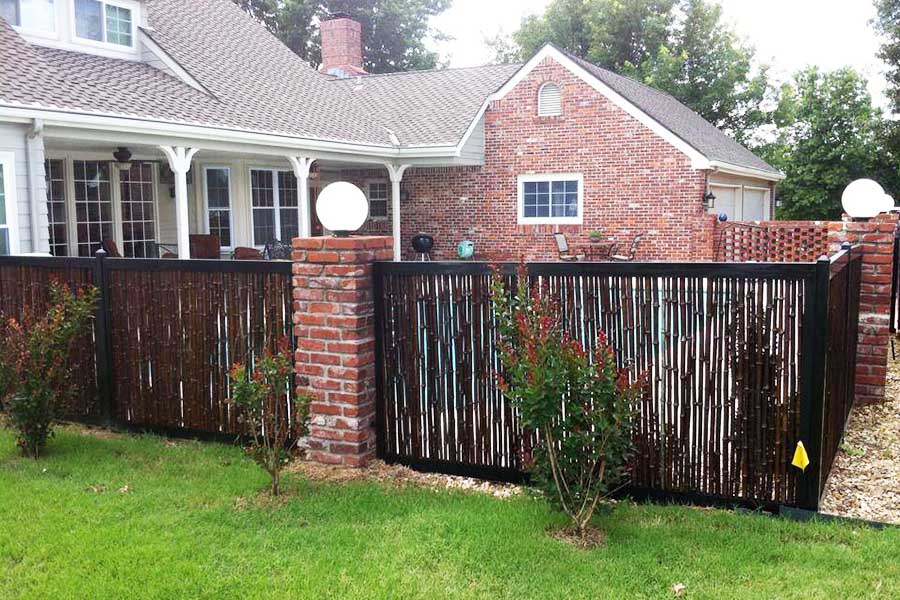All Categories
Featured

Whether it's strong winds, rain, snow, or extreme heat, climate conditions can slowly deteriorate your fencing, leading to pricey fixings or substitute. There are numerous actions you can take to secure your fencing from weather-related damage and prolong its lifespan.
- Select the Right Product. The kind of product your fence is made from plays a significant role in exactly how well it will withstand climate condition. Some materials are naturally more resistant to damage than others. For instance:
Wooden Fences: While stunning and timeless, wood can be at risk to wetness, rot, and insects. Pressure-treated wood or cedar can use far better resistance to these problems. Vinyl Fencings: Plastic is very immune to dampness, rot, and insects. It likewise stands well to harsh sun and hefty rain. Steel Fencings: Wrought iron or aluminum fences are durable and can stand up to a variety of weather. They can, nonetheless, experience from rust in time, specifically otherwise appropriately covered. Composite Fences: Made from a mix of timber fibers and plastic, composite fencings are more immune to weather-related damages contrasted to traditional wood fences. Picking the right product for your region's climate is the first action in safeguarding your fencing from weather damage.
- Seal or Stain Wooden Fences. Wooden fences are specifically prone to damage from dampness, UV rays, and temperature level changes. One of the most reliable ways to shield your wood fencing is by using a protective sealer or tarnish. These items assist:
Protect Against Water Damages: Sealants create a water-resistant obstacle, protecting against dampness from seeping right into the wood and causing mold, mildew, or rot. Shield Versus UV Damage: A good tarnish or sealant will also obstruct damaging UV rays from the sunlight, which can create wood to dry, split, and discolor over time. Maintain the Fence's Look: Regular discoloration aids preserve the natural elegance of the wood and prolongs its life-span. It's recommended to reapply the tarnish or sealant every 1-- 2 years to keep your fence good problem.
- Install a Barrier for Wind Protection. Solid winds can trigger considerable damages to your fence, specifically if it is high or weak. Wind can flex or damage wood panels, loosen fence messages, or perhaps cause the whole fence to collapse. Mounting a windbreak-- such as growing bushes, bushes, or setting up a mesh obstacle-- can assist shield your fencing from high winds.
Additionally, you can reinforce the articles with concrete or steel braces to offer additional stability and protect against shifting or leaning.
- Trim Overhanging Branches. Overhanging tree branches can position a significant danger to your fence during tornados or high winds. Dropping branches can break panels or damage the fencing posts, resulting in costly repair services. Routinely trim any kind of branches that hang over your fencing, especially if they're in close distance to it. Keeping the branches reduced reduces the threat of branches breaking short and causing damages to the fencing.
- Routine Inspections and Maintenance. Carrying out regular upkeep and inspections is crucial to catching potential problems prior to they escalate. After a hefty tornado, check your fence for any indications of damage, such as loose panels, leaning messages, or damaged areas. Dealing with little concerns before they become bigger ones can aid prolong the life of your fencing.
Additionally, cleaning your fencing regularly to remove dust, mold and mildew, or debris can help maintain its look and stability. For wooden fencings, gently stress wash the surface to remove built-up crud, and for plastic fencings, use a moderate detergent to clean any type of stains.

- Guarantee Correct Drain. Water damages is one of the most common weather-related issues that influence fencings. Poor drainage can lead to standing water around your fence posts, which can trigger the posts to rot or compromise over time.
- Apply a Safety Covering to Steel Fencings. Steel fencings, such as those made of iron or steel, are extremely long lasting however can be susceptible to rust otherwise appropriately kept. Using a safety finish or paint that is especially created for metal can assist prevent corrosion and deterioration. Make sure to examine the fencing periodically for any type of signs of rust, and address it right away by sanding and repainting the influenced locations.

Verdict. Your fencing is a beneficial investment, and shielding it from weather-related damages will assist ensure that it proceeds to serve its function for years to come. By selecting the appropriate materials, on a regular basis keeping your fencing, and taking actions to protect it from the aspects, you can lessen weather-related damages and extend its life-span. Whether you're dealing with solid winds, heavy rainfall, or the severe sunlight, these straightforward actions can go a lengthy means in preserving the condition and look of your fence, conserving you time and money over time.
Latest Posts
Discover Affordable Auto Repairs with Montclare’s Exclusive Service Specials
Published en
1 min read
Check Out Montclare Auto Repair’s Highly Requested Auto Repairs and Why Drivers Choose Them
Published en
1 min read
Find Out Why Chicago Drivers Choose Montclare Auto Repair for Dependable Service and Big Savings
Published en
1 min read
More
Latest Posts
Discover Affordable Auto Repairs with Montclare’s Exclusive Service Specials
Published May 27, 25
1 min read
Check Out Montclare Auto Repair’s Highly Requested Auto Repairs and Why Drivers Choose Them
Published May 25, 25
1 min read
Find Out Why Chicago Drivers Choose Montclare Auto Repair for Dependable Service and Big Savings
Published May 24, 25
1 min read